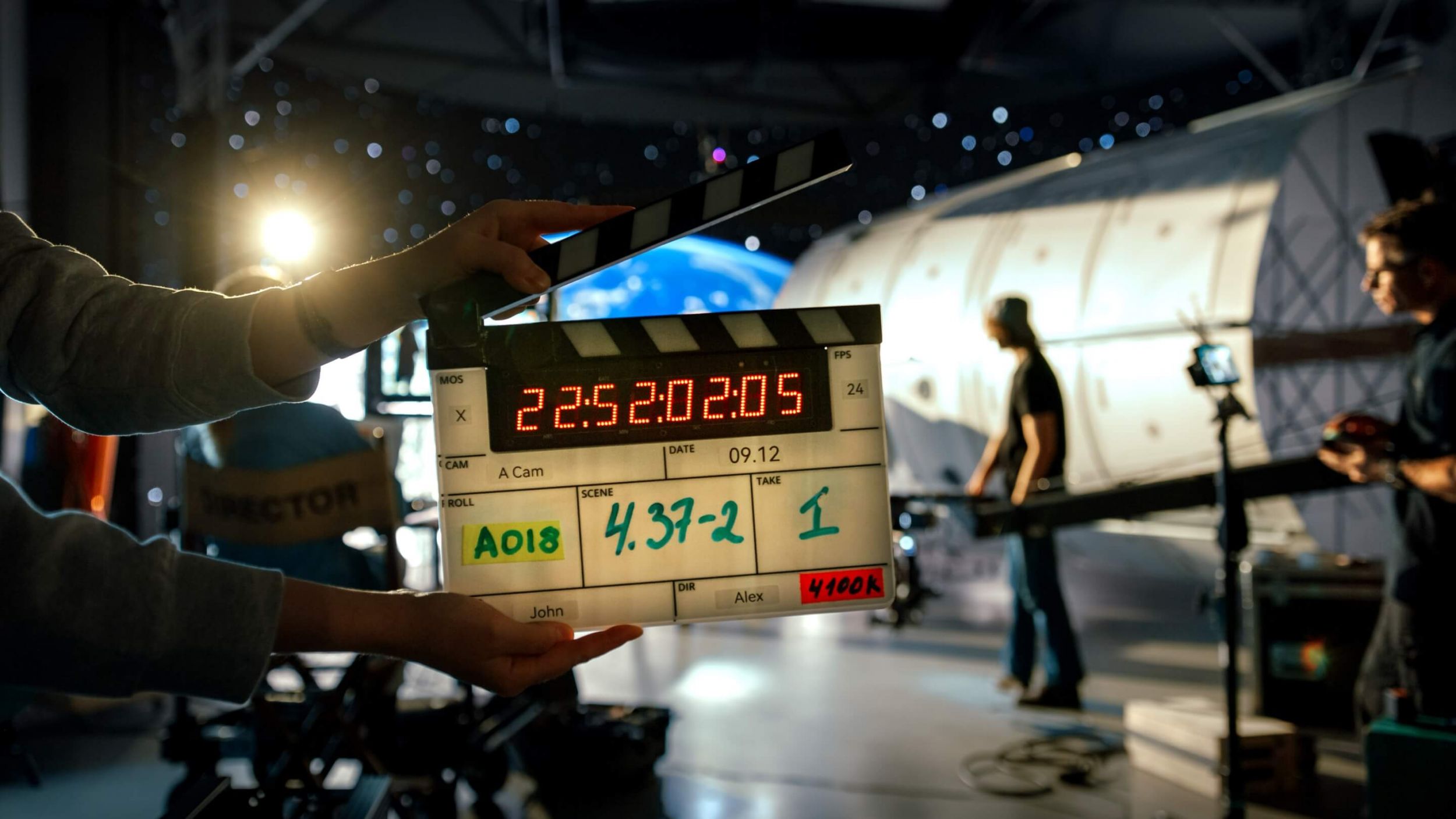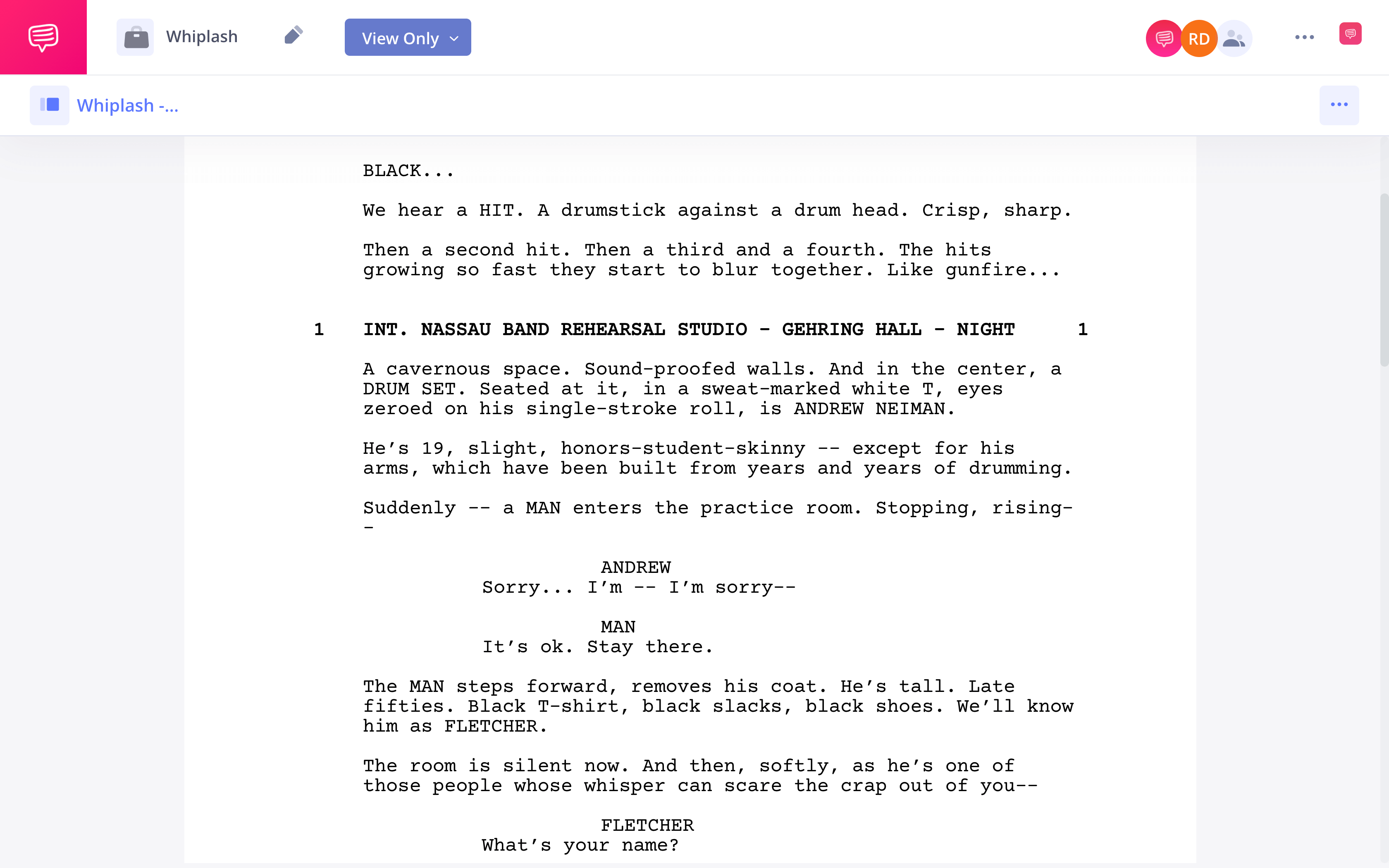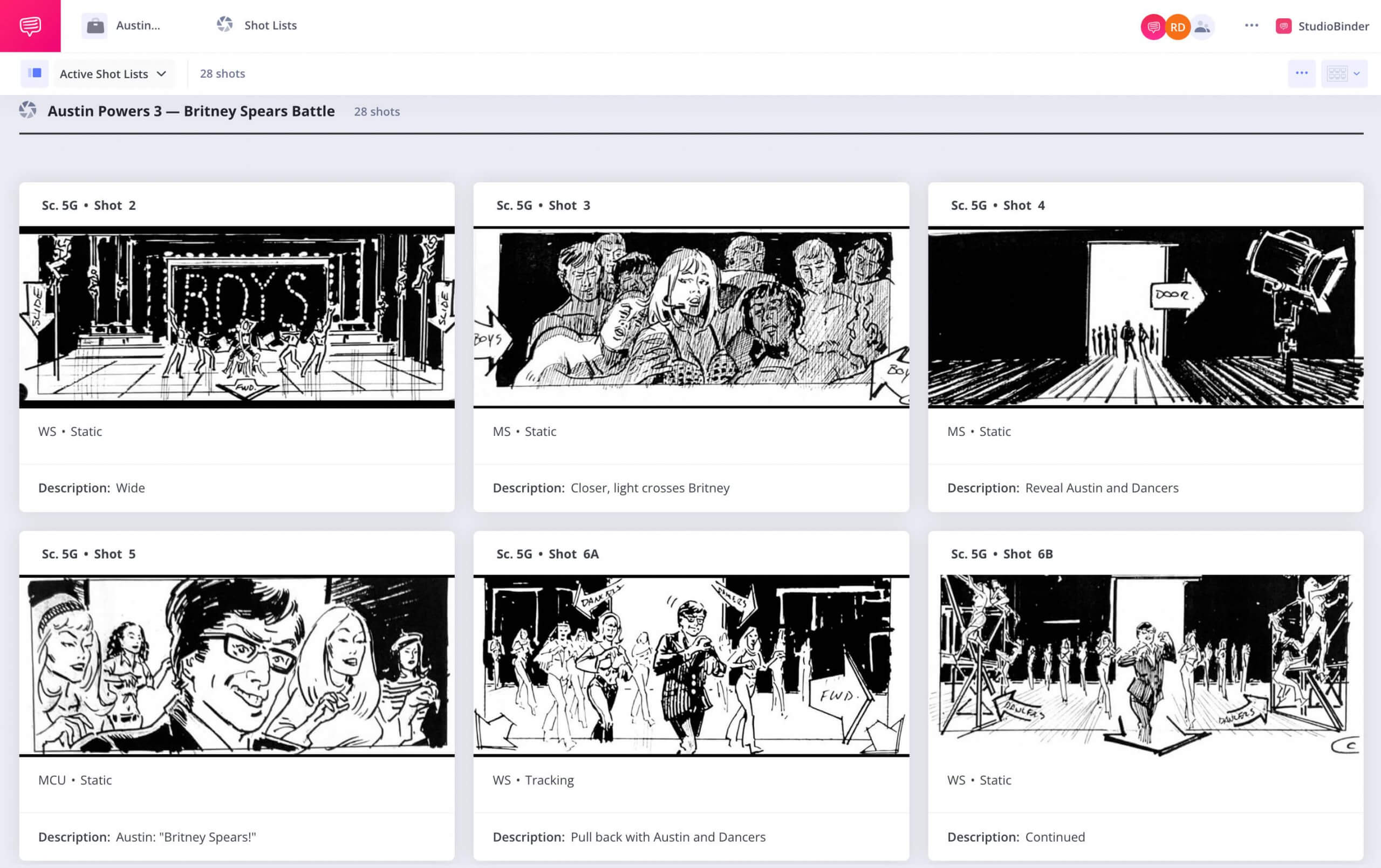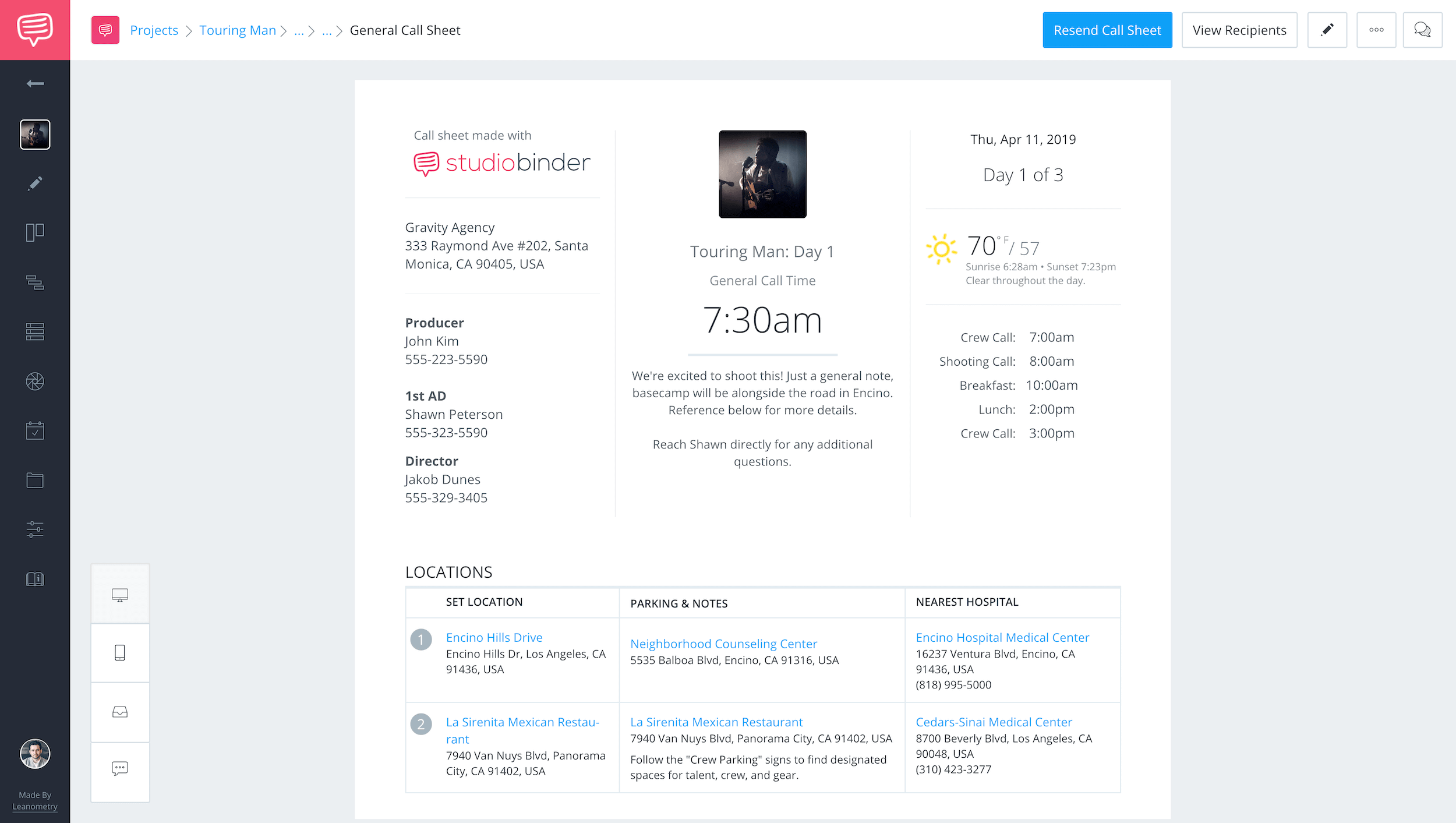There’s no one way to make a movie. In fact, there’s an infinite number of ways to make one. But in Hollywood, the general contours of a film’s creation hit similar story beats (to borrow a screenwriting term). Whether you are helming a massive studio blockbuster or grinding away at a microbudget indie film, the stages of film production often are the same.
Stages of film production
What are the stages of film production?
Before we dive into the individual stages of the film production, let’s get some definitions straight and address the different categorizations that people use when they say “stages.”
First, when we refer to “film production” in this article, we’re referring to the entire process of a film’s inception, creation, and release. Production is sometimes also used to refer to one of three steps in the filmmaking process, where the cameras are actually rolling — but more on that later.
Second, let’s outline a few different ways people divide up the filmmaking process into stages. The most widely agreed-upon, and the method we’ll be going by, contains five distinct stages:
- Development
- Pre-production
- Production
- Post-production
- Distribution
Some people will subdivide development and distribution, resulting in seven stages. Strictly speaking, however, financing really is a part of the development process, and marketing part of distribution. They are distinct elements, but they fall under the umbrella.
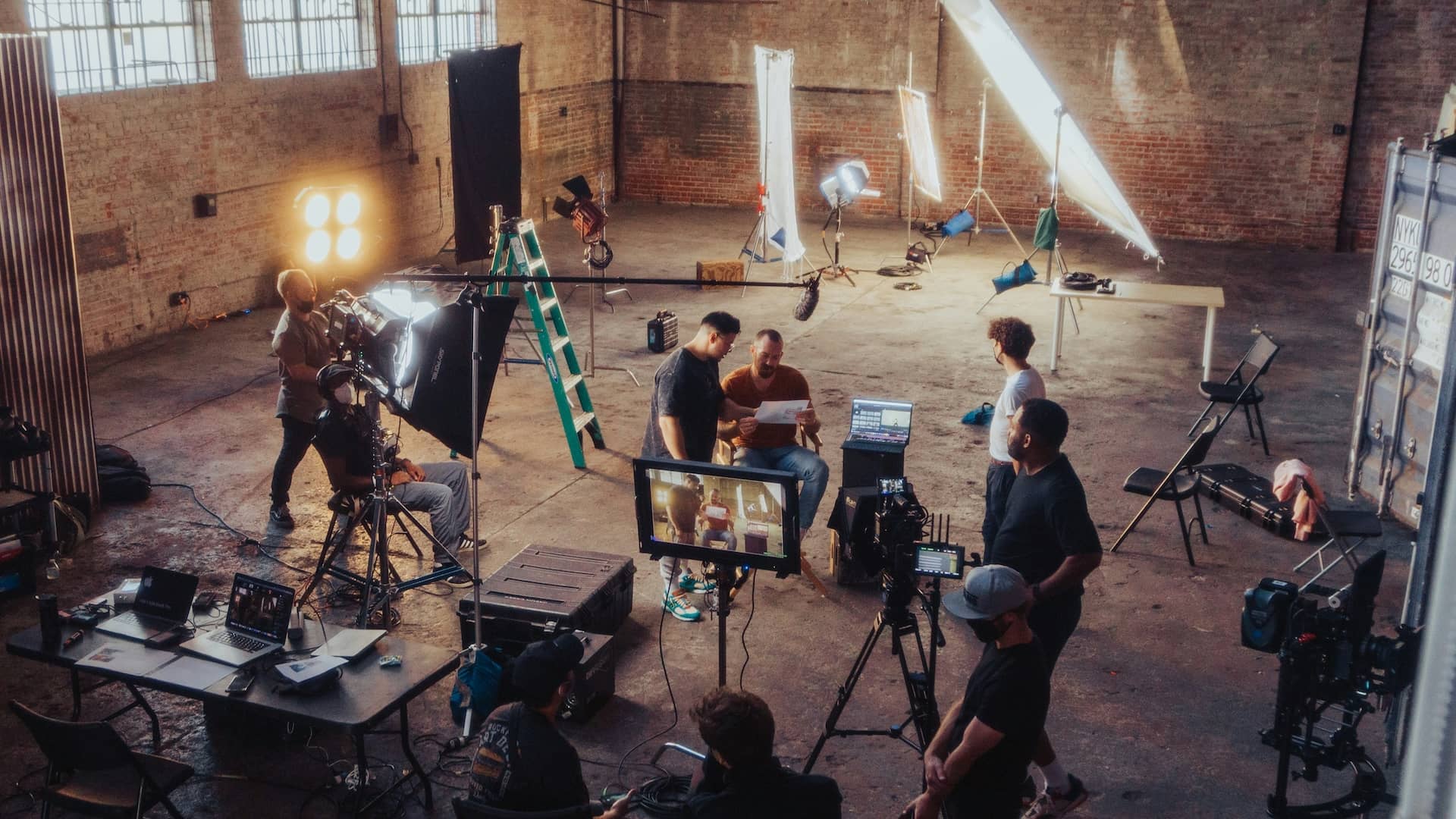
Stages of film production
Others will simply refer to the three stages of Pre-Production, Production, and Post-Production. But many film scholars divide the film creation process into a broader three stages of production — Production, Distribution, and Exhibition.
This is a favored scholarly approach because it divides the field into areas of study. Production refers to how a film is made, distribution is how a film is marketed and delivered to exhibitors, and exhibition is how the film is shown (intertwined with audience studies).
With all that out of the way, let’s look closely at the stages of production.
Stages of film production
Development
This is where it all begins. Development is the spark. A producer or a screenwriter has an idea, and they begin to make that idea into a movie.
Development is usually overseen by a producer, as they are the person who is responsible for getting the initial pieces together – the creatives, the financing, the general schedule, and so on. Here's a more thorough breakdown.
Development and Financing • Beginning the Movie Making Process
Sound kind of daunting? Then you’re getting the right idea. Development takes many forms, but it’s almost never easy. Let’s look at the two primary phases within the stage.
The Package
A big part of a producer’s job during development is putting together a package. This is a collection of the creative elements that will be part of a project. This may include a screenplay, a piece of intellectual property, a director, or some actors.
The screenplay is always the starting point on top of which everything else is built. A script with proper screenplay formatting will inform everything from the dialogue and costumes to the budget and schedule.
Here's a screenplay example using StudioBinder's screenwriting software. Click the image link to read the entire Whiplash script.
Whiplash Movie Script • Stages of film production
A package is all about sell-ability. A good package is one which a financier can look at and immediately see why it’s a worthwhile investment. Stanley Kubrick wants to direct a movie based on a best-selling novel by Stephen King? Sold. Margot Robbie wants to play the most iconic doll of the last century? Sold.
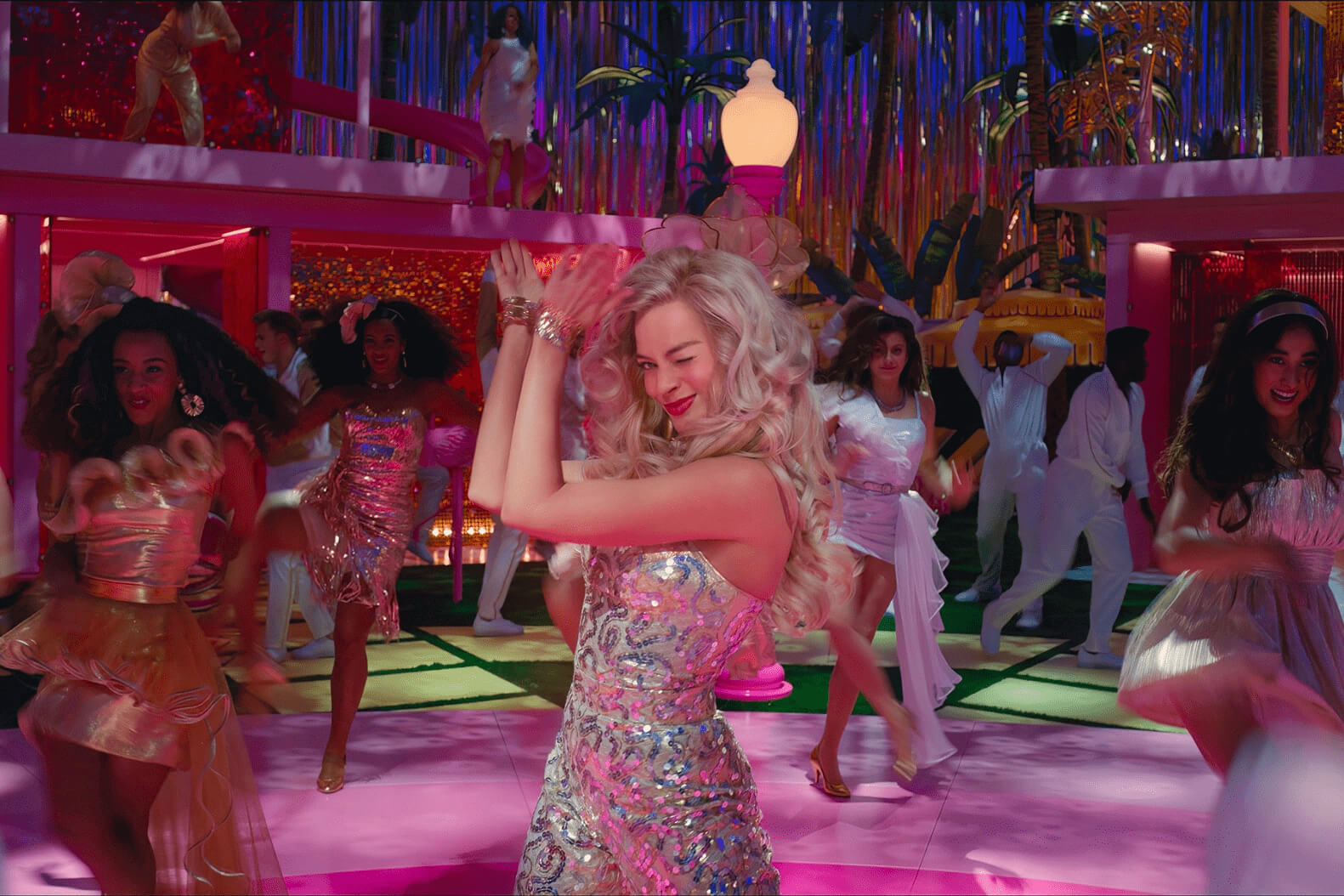
Margot Robbie in Barbie • Stages of film production
If a package gets a go-ahead from a studio, it has been “greenlit.” Failure to get the greenlight might mean a project enters Development Hell – essentially a purgatory state for a movie, where it gets bounced around from studio to studio, exec to exec, for what could be years.
Development Hell doesn’t mean a film is condemned to the underworld for eternity, however. Many movies have made it out of Cinema Satan’s grasp: Dallas Buyers Club, The Irishman, and Mad Max: Fury Road are all movies which lived through such turmoil for years.

DeNiro waiting for The Irishman to be greenlit • Stages of film production
Financing
To make a movie, you must spend money. It’s an unfortunate fact of life. This means that you must get money first, and that’s the job of the producer in the development stage.
How a film is financed can take many forms, and the routes for studio financing are very different from those for independent films.
Studios can get money from pre-sales, which refers to selling a film before it’s made to local distributors. They can also rely on slate financing, which is getting money from investors for an entire roster of films (diversifying investments and thereby mitigating risks). They can take out loans through things like negative pickups, gap financing, and bridge financing.
For indies, things get a bit scrappier. Financing can come from networking at festivals, crowdfunding, grants, tax incentives, private equity investments, or even the filmmaker’s own pocket. There are famous examples of this last option (M. Night Shyamalan, Robert Rodriguez, Kevin Smith), but it really is not recommended. Movies are generally not good investments.
Once financing is secured, you’re ready to move to the next stage.
Related Posts
Stages of production
Pre-Production
Pre-production is where the rubber hits the road. A producer has put blood, sweat, and tears into getting their project picked up, and finally their wishes have been granted. Time for the hard part: making the movie.
Pre-Production • Stages of film production
Pre-production refers to all the preparation necessary before filming begins. In other words, it’s everything that happens between financing being secured and production. There’s three major things that have to happen during this stage.
Budgeting
You have the money, now how do you spend it? Typically, a producer has outlined the general costs of a film during the development phase, but in pre-production they get into the nitty-gritty.
With the aid of a line producer (who goes through a budget “line by line”), the producer will look at where money will go during and after the shoot. This means creating a detailed shooting schedule which will foresee location, cast, film crew, and equipment costs (among other things).

Line producer at work • Stages of film production
There are tons of logistics that need to be addressed during budgeting. Rentals, props, costumes, set decorations — how much will these things cost? How will they get to set? How much will that cost? And on and on.
Getting the Team Together
A movie isn’t made by one person. Typically, in fact, it’s made by hundreds of people. In pre-production, a producer hires these people.
For the crew, a producer, usually with input from the director, will hire heads of departments — professionals like the cinematographer, production designer, costume designer, etc. These heads will then help fill out their respective departments with people they trust and feel they will need. This video breaks down some of the key positions:
Positions in film • Stages of film production
Then there’s in front of the camera. A few of the lead actors may already be attached to the project in the development stage, but now the rest of the cast has to be filled out. This is where a casting director comes into play.
The casting director will read the script, consult with the director, and put together auditions for all the parts that need to be filled. They’ll send their top picks to the director (if the director isn’t there for the auditions).
Pre-visualizing
Pre-production isn’t all logistics. A director, and usually their DP as well, will start planning out how they want their film to look.
This might mean making a storyboard or writing out a shot list. It also means consulting with the production designer to decide what sets will look like, and meeting with the costume designer to think about what the costumes will look like. Check out this storyboard sequence from Austin Powers 3.
Sample storyboard • Stages of film production
Then there’s location scouting, which is overseen by, you guessed it, the location scout. A location scout will typically be accompanied by a tech scout, which refers to all the logistical considerations that go into choosing a location. How will location be transported to the space? Are there power sources? Sound issues? Where does the sun rise and set?
Once the planning is complete (or, rather, as comprehensive as it can be), it’s time to film.
Stages of production
Production
When you ask most people to describe the making of a film, they’ll describe what happens during Production. This is when the cameras roll and the footage is captured.
Film Production • Steps to Make a Movie
The entire process of making a movie is a marathon, but the production phase is a sprint. Usually, a production schedule is as crammed as possible (the longer a shoot, the more expensive it gets).
There are a ton of moving elements within the production stage, but let’s do a quick overview.
The Call Sheet
So who shows up when? And where? All these answers and more can be found in the call sheet, a document sent out by an assistant director each day before a shoot. It tells each member of each department what their call time is and what they should be planning to do for the day.
Sample call sheets • Stages of film production
Typically, the general order of things is crew first, cast second. This gives the crew time to set up, which brings us to our next point.
The Set Up
A lot of work happens on set before the camera starts filming. The grip and electric departments work to set up the lighting for the shot, which can take up to a few hours. Often once one set up is done, they’ll get started on the next one while the rest of the crew films.
As the lighting gets prepared, the camera department will set up the camera (aptly named, right?) and any rigging involved for movement. Meanwhile, the makeup and costumes department will get an actor into the right look for the given scene.
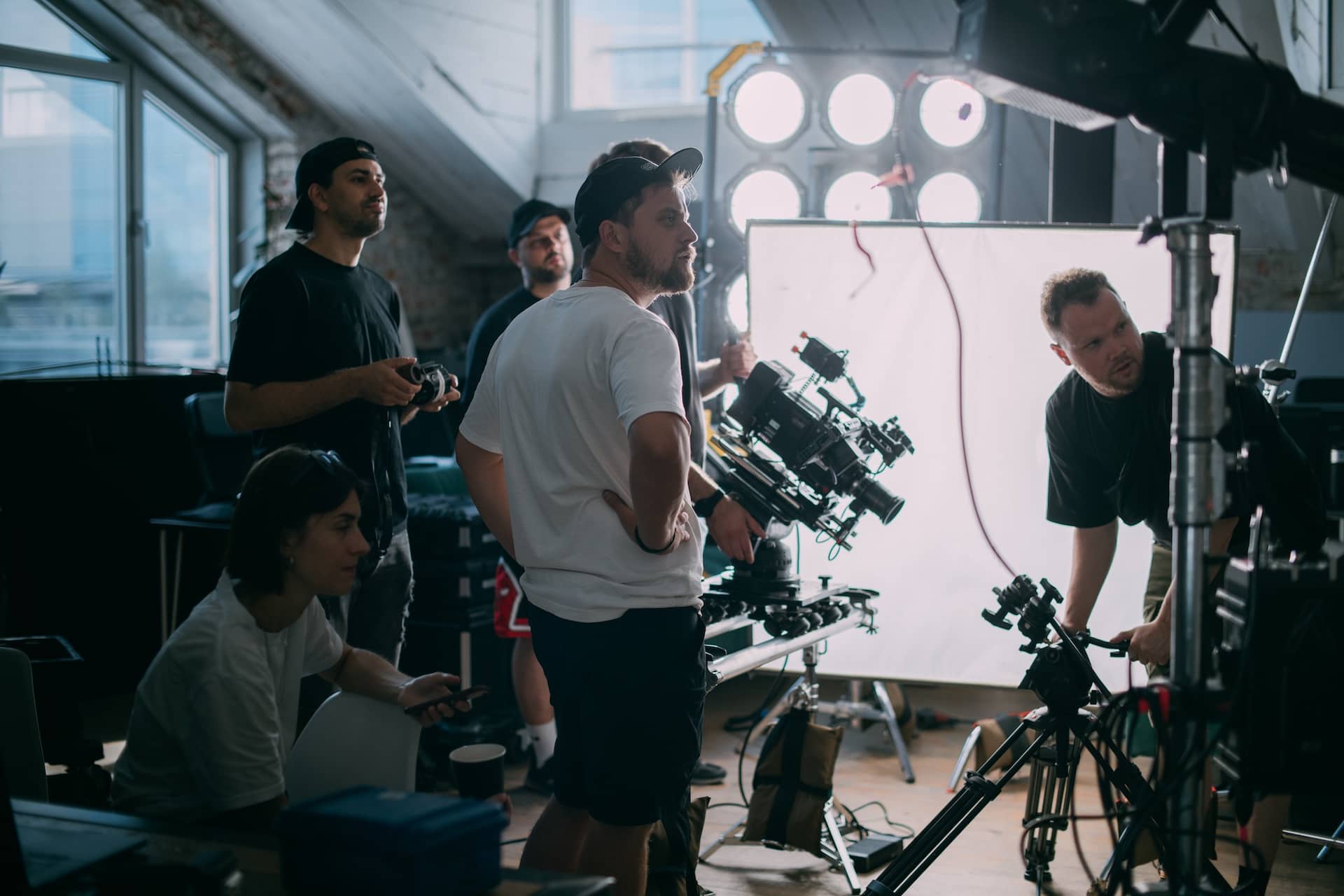
Production • Stages of production
Sometimes, actors will quickly run through blocking with the director, and the sound and camera crews will rehearse alongside them. This allows everyone involved to know what to expect, and to flag any potential issues that may arise before shooting begins.
Shooting
Finally, it’s the moment everyone’s been waiting for. Development, pre-production, prep work on the day: it’s all led up to this. Here’s a quick run through of the steps typically required when filming:
The Assistant Director announces “Picture is up”
AD calls for quiet, then says “roll sound,” prompting the sound mixer press record. Once recording, the mixer will respond, “Sound speeds.”
AD says “roll camera,” and the camera operator will start rolling. They’ll then say, “Speed.”
The clapper loader (2nd assistant camera) slates, reading the scene information off the clapperboard and marking.
The director says action.
When the scene is over, the director says cut.
And that’s it: you’ve got a take in the can. Time for hundreds more.
Once the whole project is in the can, it’s time for the next stage.
Related Posts
Stages of production
Post-Production
What happens after production? Post-production. This stage refers to all the work that is done after footage is captured to finish the film.
And that’s a lot of work. Here's a breakdown of the post process.
Post-Production Explained • Film Stages
Most people associate post-production with film editing, and while that is a crucial part of the process, there are many other elements at play in the stage.
Picture Editing
But let’s start with the most obvious part. Picture editing refers to cutting together the footage to create a coherent film. The editor is typically working with sound, but it’s not their duty to get a fine cut of audio (we’ll get to whose duty that is momentarily). Editor Thelma Schoonmaker describes her job:
Thelma Schoonmaker, Scorsese’s go-to editor • Parts of filmmaking
There are three general cuts that an editor will go through, along with collaboration with the director.
The first is the assembly, essentially where the editor and director review the footage, select takes, and put them in order with little regard for pacing. The second is a rough cut, where rhythm becomes more of a priority. Finally, there’s the fine cut, where decisions are more intricate and the cut is approaching picture lock.
Sound Editing
Of course, most movies today have sound. Getting the right sounds in the right place at the right levels is an entire artform (and science). For this reason, the sound team in post-production is expansive, consisting of sound mixing & sound editing.
First, there’s sound editing. This is essentially putting all the sound effects, dialogue, voice overs, and more in place. Take a listen to some of your favorite movie scenes and try and discern just how many things are happening on the audio tracks — chances are it’s far more complex than you’d initially realized.
Then, there’s sound mixing, which refers to getting all of the levels correct for exhibition (and various exhibition settings). This is a scientific process, and requires years of training and practice.
A brief overview of the sound process in film, by industry professionals:
Sound editors describe their work • Film production process
While all this is happening, the composer is typically hard at work writing and recording the score, which the sound editors and mixers will insert into their process.
Additional Visuals
These days, what’s captured on set is often by no means the final image. There’s a lot of additional treatment that goes into many shots, including various types of VFX like compositing.
There’s computer generated images (or CGI), which can involve anything from removing an ill-placed No Parking sign to creating a brachiosaurus.

Jurassic Park • Phases of production
There’s also coloring, which is done by a colorist. Depending on how a film is shot (on film, RAW, etc.), this can take many different forms.
Finally, a film needs a title and credits, which will involve typography choices, motion designers and more. Saul Bass was one of the most famous title designers ever – check out how he changed the game below.
Saul Bass, pioneering designer • Production stages
Once all this work is done (and we’ve just skimmed the surface of the work to be done), it’s time to get the movie seen.
Stages of movies
Distribution
What good is all of the labor we’ve outlined so far if no one sees the movie? This is where distribution comes in. Many beginning filmmakers tend to be caught off-guard by this process, which is under-discussed and can be costly and time-consuming.
Distribution and Exhibition • Last Stages of Production
Like most of these stages, distribution is a huge umbrella term that encompasses dozens of different tasks and steps.
Marketing
To get people to see your movie, you need to tell them it exists. Film marketing is a complex beast, and will look vastly different depending on a film’s budget and projected box office. A Marvel film is going to be marketed differently from Drive My Car.
How to Sell a Movie to the Audience • Film Marketing
Don’t think just because you shot your film on a shoestring budget that marketing isn’t a possibility. You can cut a trailer, make a poster, build an electronic press kit, and more for relatively cheap.
Securing Distribution
Securing distribution is a bit like the Development process part 2 — it’s about who you know and being able to sell your vision. The major studios usually have an in-house distribution company, while indie studios will typically shop their project around to multiple firms.
If you’re a truly independent filmmaker who’s made a feature on your own, then you may get distribution at a film festival, or you may want to hire a sales agent, who can connect you with distribution companies.
If all else fails, there’s always the internet (you know, the place where people upload countless terabytes of footage every second).
Once your film is out in the world, congratulations — you’ve completed the five-stage process that is truly a gauntlet. Nobody said making a movie’s easy, but it’s far from impossible.
Related Posts
Up Next
Best Film Festivals
We’ve gone through stages of movies, but as a beginning filmmaker, festivals are everything. Getting traction at a respected festival can level up your career in a big way. We’ve compiled a list of all the film festivals which are worth the submission fee.
Up Next: Top Festivals →
Showcase your vision with elegant shot lists and storyboards.
Create robust and customizable shot lists. Upload images to make storyboards and slideshows.
